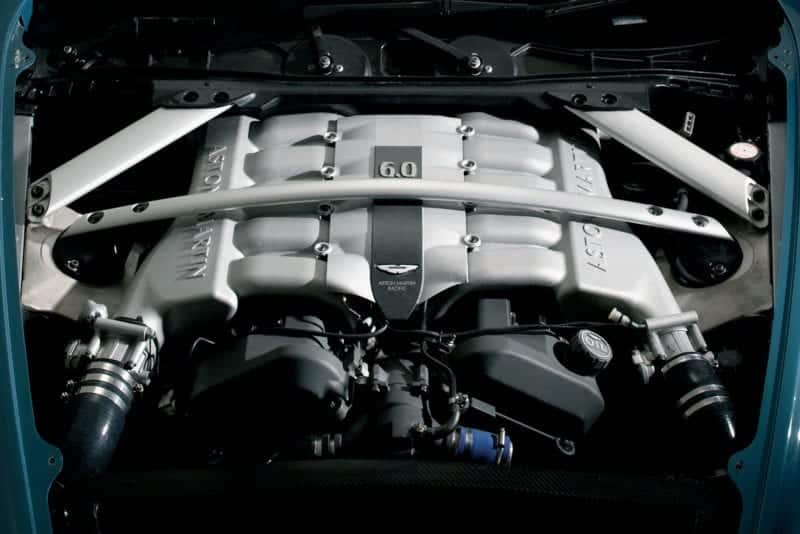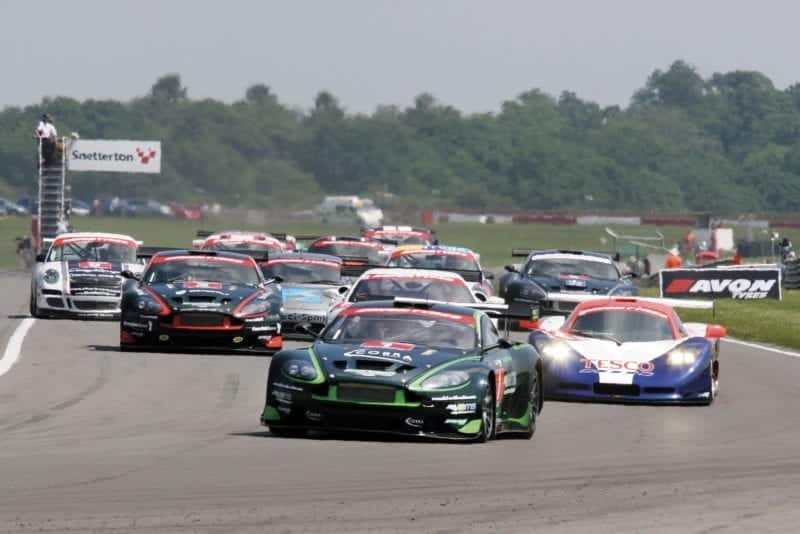Race car buying guide: Aston Martin DBRS9
A cut-price GT challenger that helped build the foundations for motor sport’s most successful formula

Aston Martin has been an ever-present force in GT3 and its success can be traced back to the DBRS9
All great things have to start somewhere. It’s difficult to imagine now that the global success of GT3 racing began 14 years ago at Silverstone.
Since that first event for the FIA GT3 Championship, the cost-controlled, production-based sports car formula has gone global. It’s often said that if you own a GT3 car, and have pockets deep enough, it’s possible to race it on any given weekend somewhere in the world. Well, you could pre-virus…
GT3 may have changed from its original low-cost roots, with some modern cars costing north of €500,000 and the budgets to run with a top team at least that amount again, but it hasn’t stopped the meteoric rise of the class. But let’s get back to 2006, and one of the cars that helped put GT3 on the map in the first place: the Aston Martin DBRS9.
In the mid-2000s, Aston was on something of a roll in the motor sport arena. The DB7 had rejuvenated the brand under Ford ownership and was due for a successor, which came along in the form of the gorgeous DB9 in 2003. With order books full and Aston hoping to make around 1500 DB9s each year – but actually producing closer to 2500 annually – Prodrive boss David Richards convinced Aston Martin to take the DB9 racing.
That resulted in the DBR9: A fire-breathing GT1 challenger that was an immediate success. It won the GT class of the Sebring 12 Hours on its debut in 2005 and finished third in its first Le Mans, before winning in ’07 and ’08.
The DBR9 was taking the plaudits, but at a £450,000 entry price it was never going to be widely available to customer teams. GT3 presented an interesting new challenge.

DBRS9 shared the V12 motor of the GT1 car, but was detuned by 50 horses to 550bhp
Taking the template of the DBR9, Aston Martin Racing – or Prodrive for short – could scale back the design to reach a more appealing price point of £175,000. The best part was that it still looked and went like a DBR9.
The engine was shared, with the same 5.9- litre DOHC all-aluminium V12 being used in both race cars. It was de-tuned to 550bhp in the DBRS9, from 600bhp in the DBR9 GT1, both to increase reliability and the service intervals, which brought running costs down. Interestingly, and dating it to very early GT3, customers could even retain a manual gearbox if they wished, although the vast majority were made with the six-speed sequential unit.
The chassis was less developed than that of the GT1, but the suspension was shared, as was the carbon-fibre bodywork, so the car was light at just 1280kg.
There were a few cost-cutting compromises, the early cars arriving with five- stud wheels, which didn’t speed up emergency tyre changes.

Aston’s British GT success in 2007 included a milestone first UK win for a biofuel-powered car
When GT3 homologation was opened in late 2005, the DBRS9 was the third-ever car to gain the rubber stamp, behind only the Maserati Gran Coupé and Dodge Viper, and it enjoyed a far longer competition lifespan than those two.
The DBRS9’s first FIA GT win came at the fourth race at Oschersleben, with the BMS Scuderia Italia team. The first outright championship followed in 2009 with the HEXIS AMR team scoring three wins with its version crewed by Christophers Haase and Mies.
Domestically, Barwell Motorsport ran Leo Machitski to the British GT3 title in 2006, and only just missed the outright ’07 crown running a unique biofuel-powered version for Lord Paul Drayson and Jonathan Cocker, although Barwell lifted the teams’ title. Drayson/ Cocker would win twice that season, with the Aston becoming the first biofuelled car ever to win a British motor sport event.
Production of the DBRS9 ended in 2008, with 26 customer chassis – plus a factory mule or two – made. In 2012, it was replaced by the V12 Vantage GT3, which went on to win the British GT title four times in seven seasons, becoming the series’ most successful GT3 model. The current V8-powered Vantage came on stream from 2019, and carried on the winning that started from the impressive foundations laid by the DBRS9.
Aston Martin DBRS9 GT3
Price new: £175,000
Price now: £200,000-£250,000
Engine: 5.9-litre aluminium DOHC V12
Rivals: Dodge Viper Competition Coupé, Maserati Gran Coupé, Corvette Z06.R GT3
Verdict: A milestone car that helped build the GT3 phenomenon
Market view
A rare find with plenty of variables to ponder
The DBRS9 is a relatively rare sight to see on the market because only 26 customer cars were ever built.
When they were first released in 2006, the base price was £175,000 plus local taxes, meaning that UK-delivered cars would have cost £205,625, which would be £300,000 in today’s money.
In 2015, chassis no7 sold at auction at Amelia Island for £115,000 at the time.
Chassis no16 sold at an auction in France for £195,000 in 2018, while chassis no19 was offered for sale at £199,950.
Chassis no11, which was a manual gearbox un-raced car with as little as 150 miles on the clock, was offered for £207,000 in Sydney.
The 2015 sale appears to have been a good buy, all things considered. The clustering of 2018 sales are likely to be more representative of the market for prospective buyers.
£250,000 is probably a guide price, with pricing variables being the date of the car’s last overhaul, the amount of spares that are attached to the sale, and the racing success of the particular chassis in question.
Robert Johnson, Classic and Sports Finance
Target Deal
Aston Martin DBRS9 – £200,000 – £250,000
